Abstract
A conceptually simple and east-to-use technique is described that uses continuous impedance measurements for automated monitoring of microbial growth and metabolism. The method has been applied to a wide range of microorganisms. Optical clarity is not required. The sensitivity and reproducibility of the method are demonstrated. The mechanism whereby microbial growth alters the impedance of the medium is discussed, as well as potential applications of the method to clinical microbiology.
Full text
PDF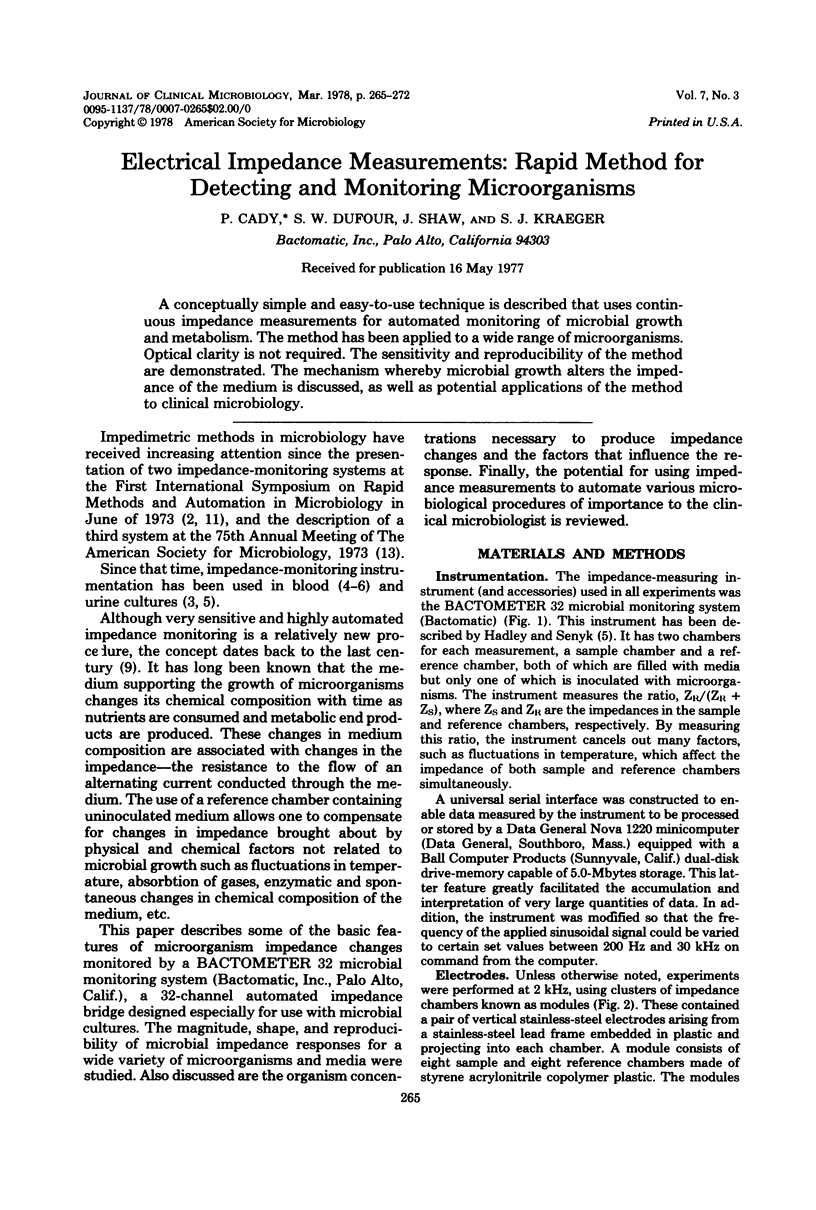
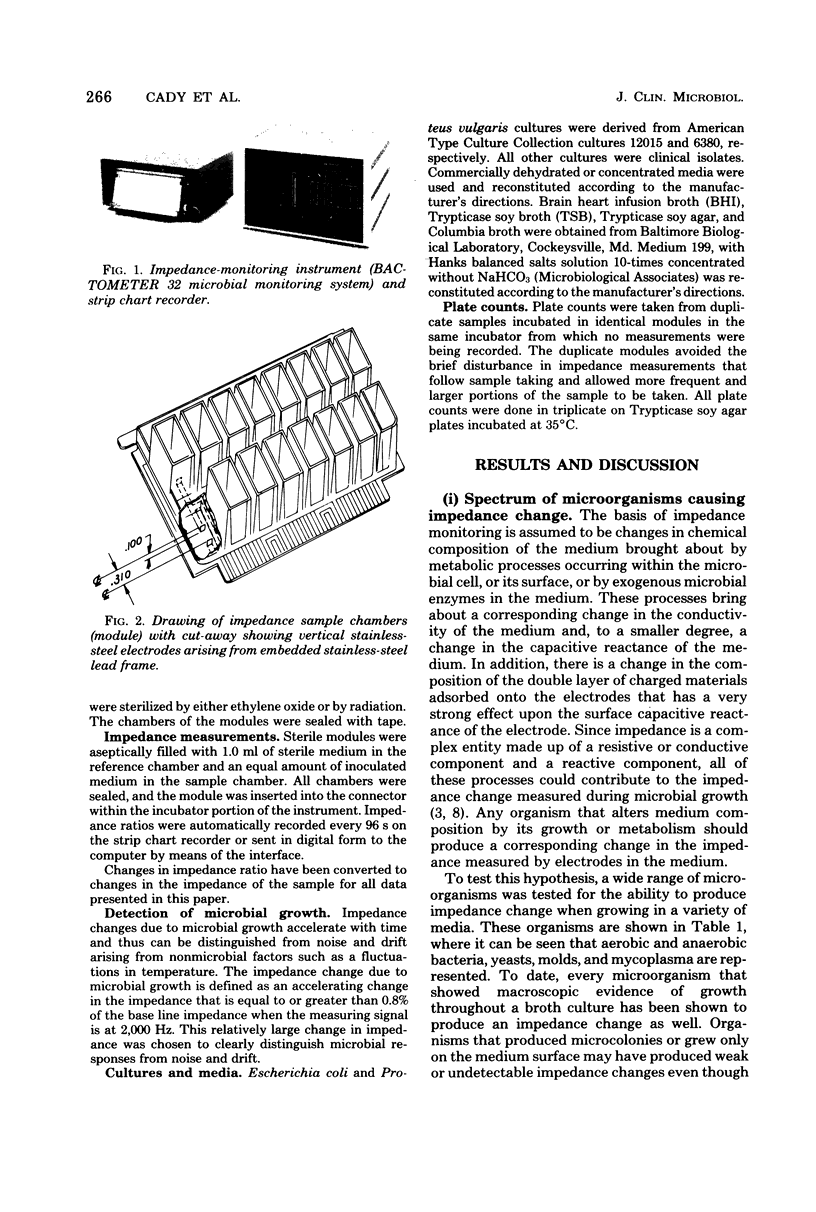
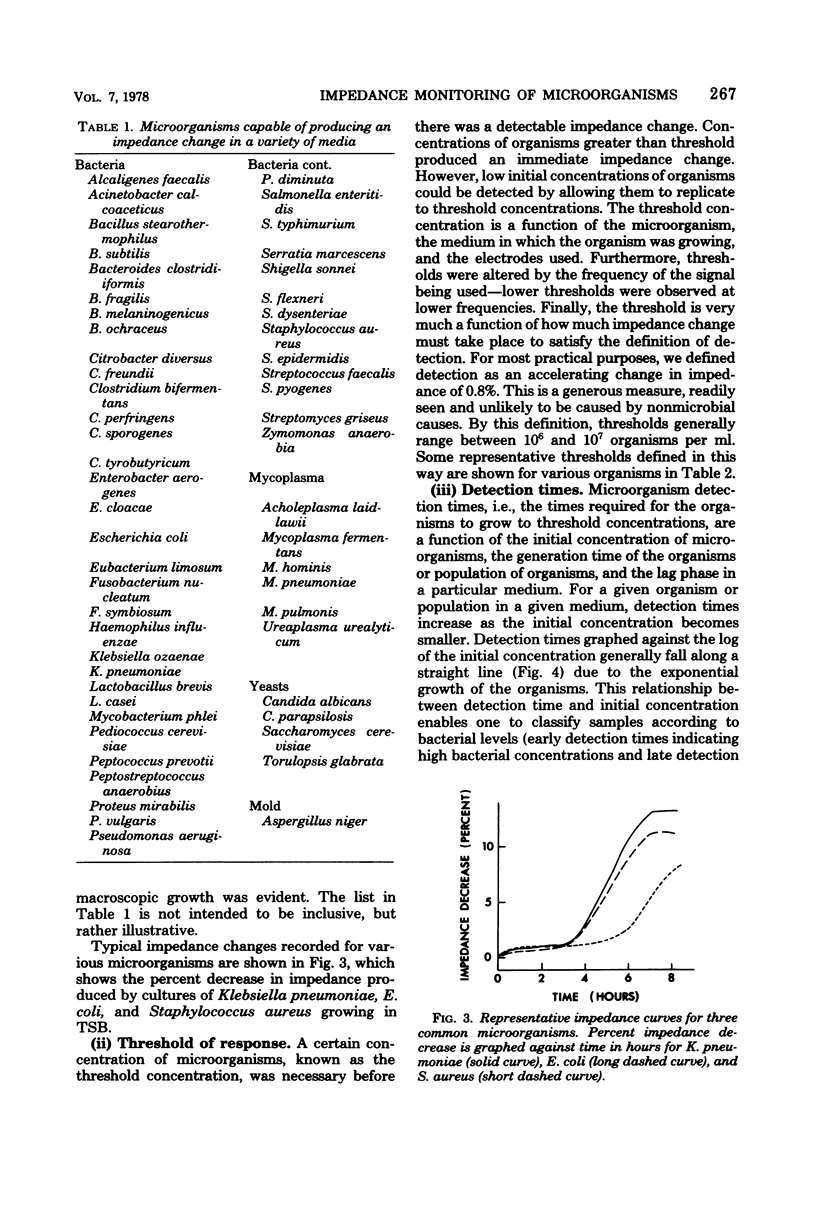
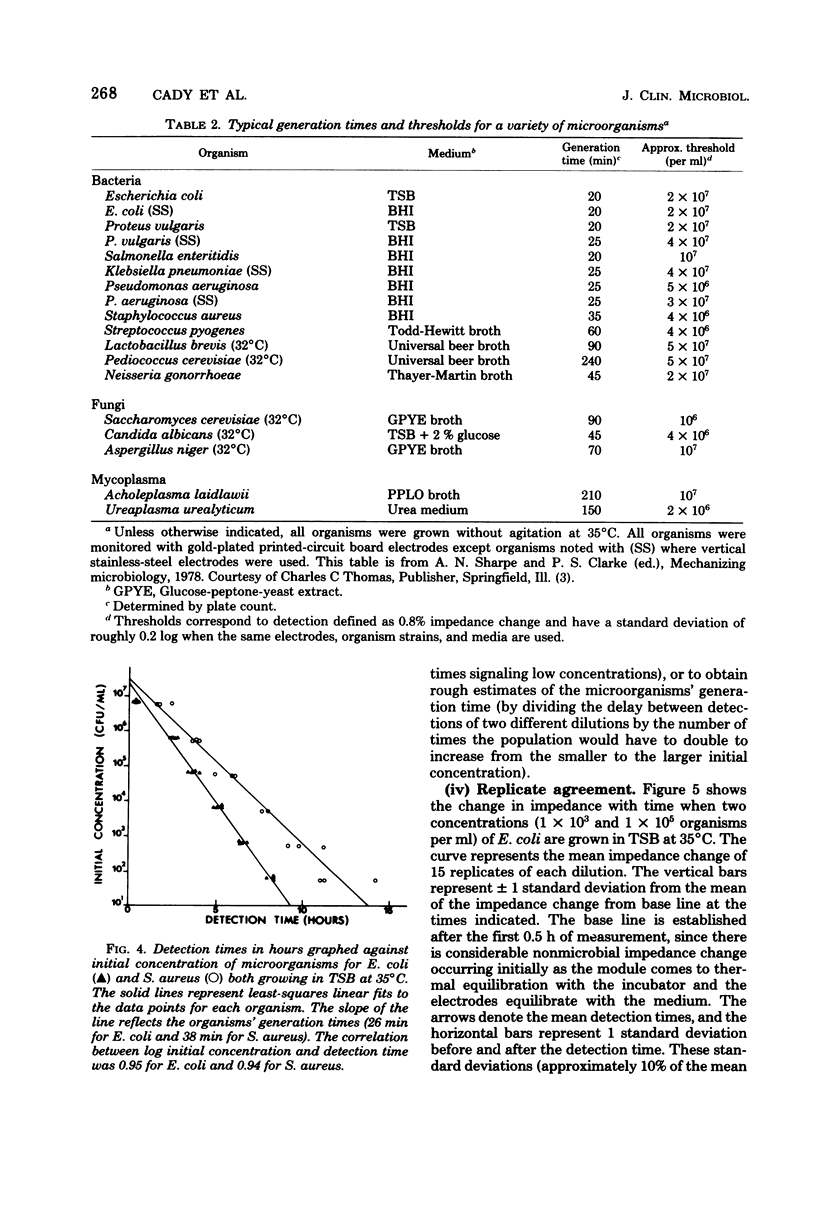
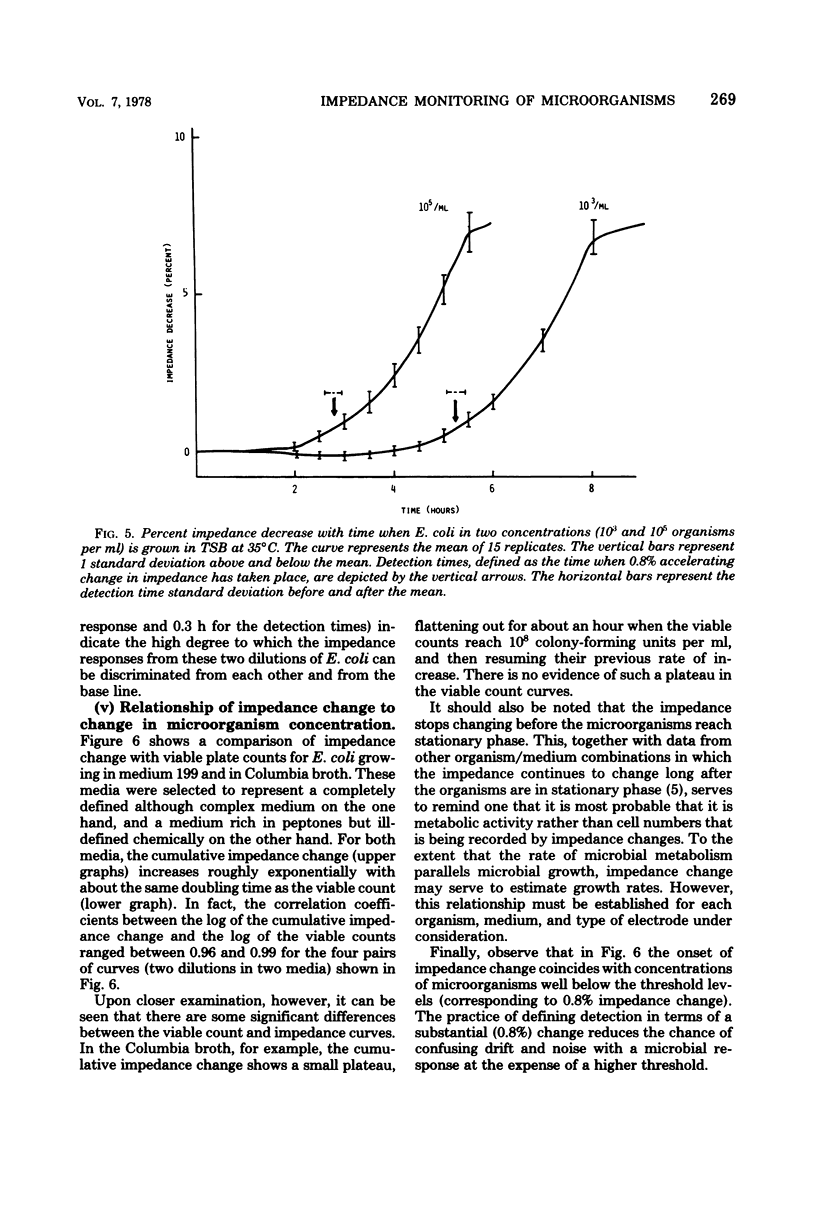
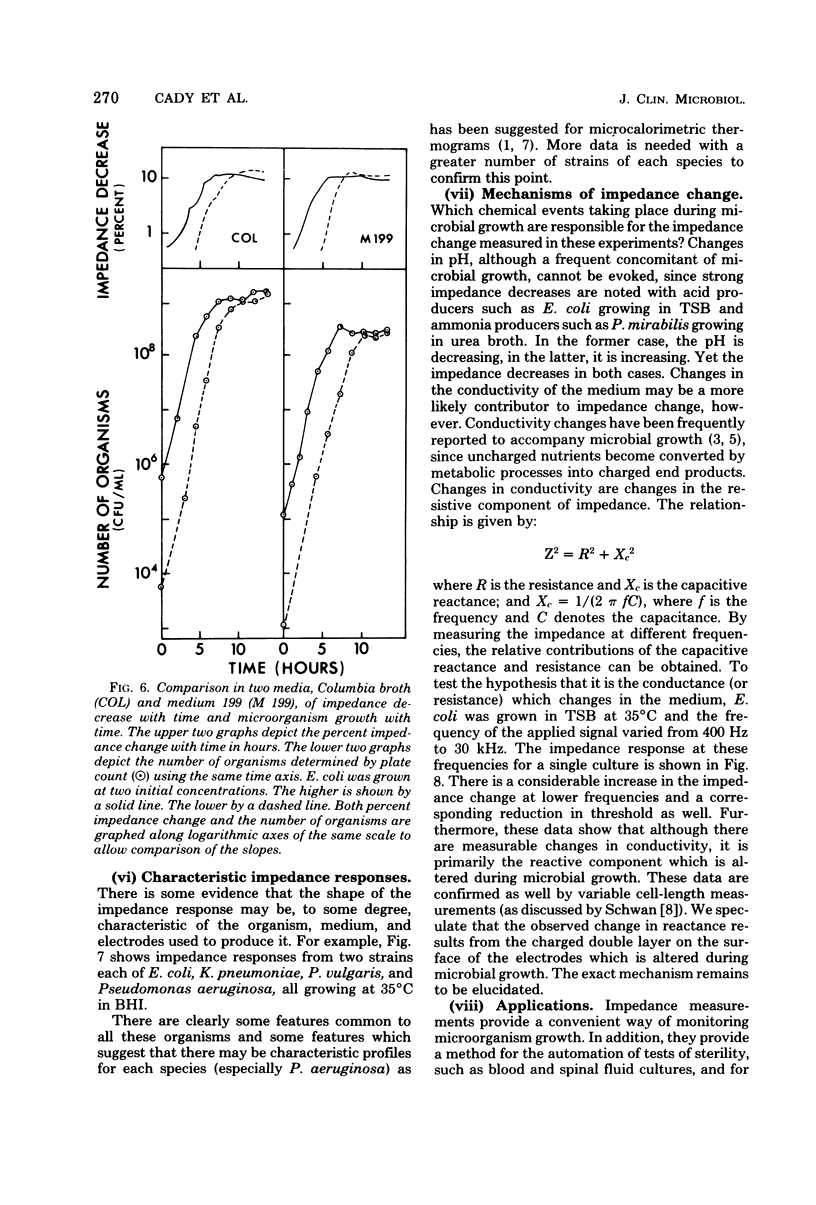
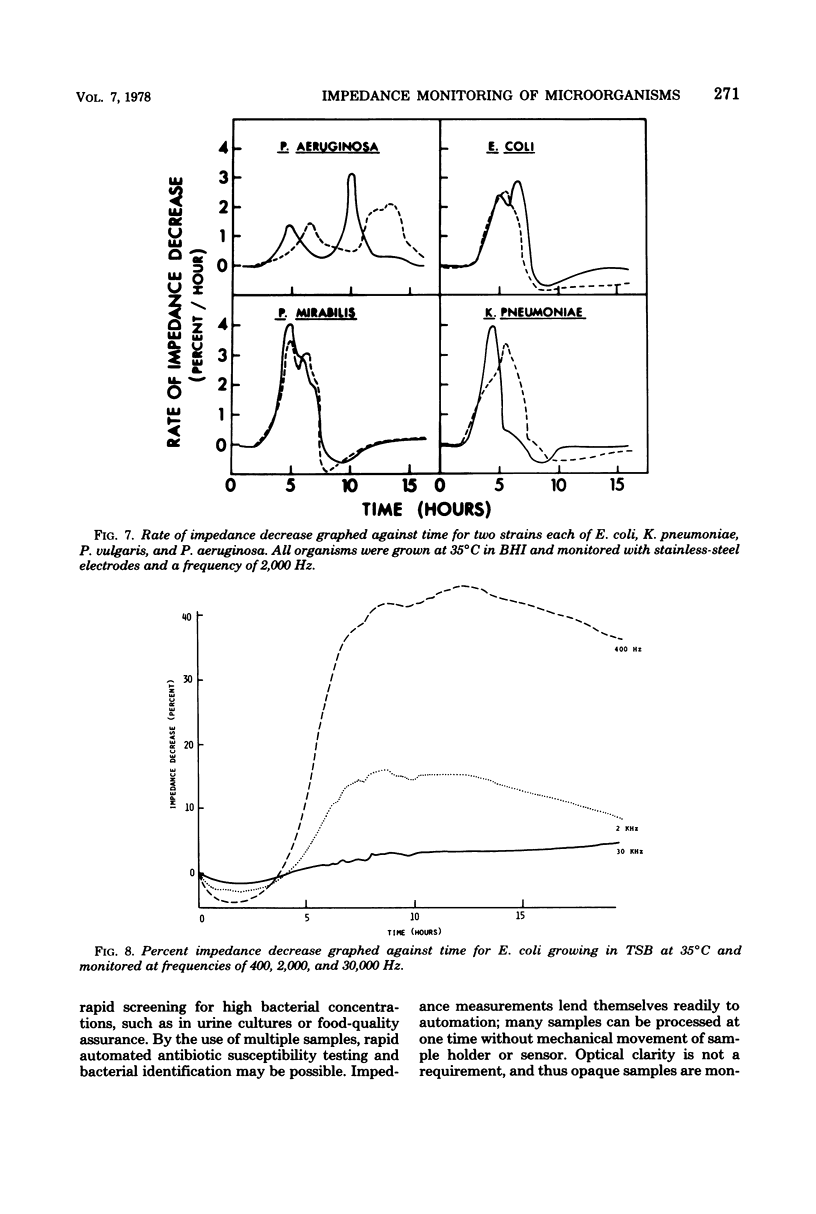
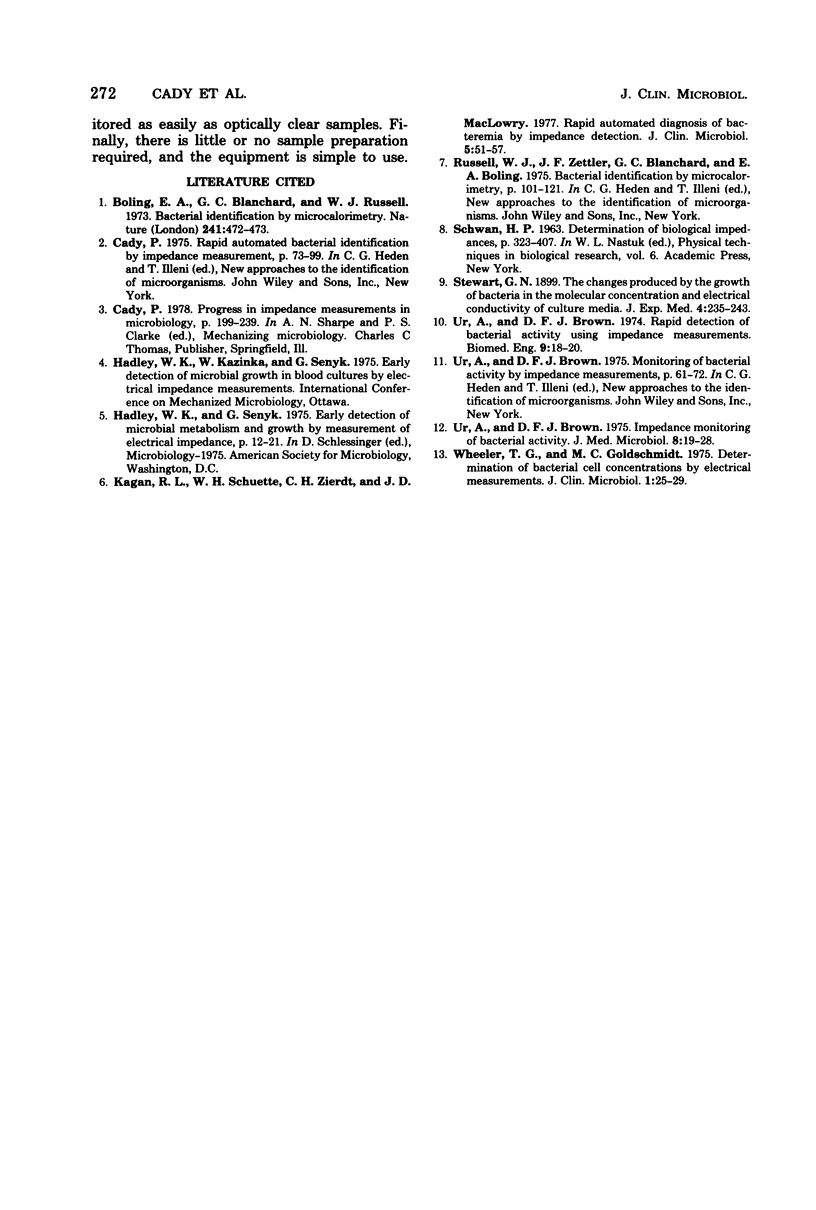
Images in this article
Selected References
These references are in PubMed. This may not be the complete list of references from this article.
- Boling E. A., Blanchard G. C., Russell W. J. Bacterial identification by microcalorimetry. Nature. 1973 Feb 16;241(5390):472–473. doi: 10.1038/241472a0. [DOI] [PubMed] [Google Scholar]
- Kagan R. L., Schuette W. H., Zierdt C. H., MacLowry J. D. Rapid automated disgnosis of bacteremia by impedance detection. J Clin Microbiol. 1977 Jan;5(1):51–57. doi: 10.1128/jcm.5.1.51-57.1977. [DOI] [PMC free article] [PubMed] [Google Scholar]
- Ur A., Brown D. F. Impedance monitoring of bacterial activity. J Med Microbiol. 1975 Feb;8(1):19–28. doi: 10.1099/00222615-8-1-19. [DOI] [PubMed] [Google Scholar]
- Ur A., Brown D. F. Rapid detection of bacterial activity using impedance measurements. Biomed Eng. 1974 Jan;9(1):18–20. [PubMed] [Google Scholar]
- Wheeler T. G., Goldschmidt M. C. Determination of bacterial cell concentrations by electrical measurements. J Clin Microbiol. 1975 Jan;1(1):25–29. doi: 10.1128/jcm.1.1.25-29.1975. [DOI] [PMC free article] [PubMed] [Google Scholar]



